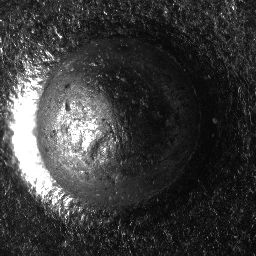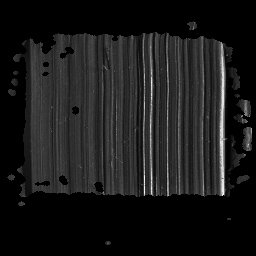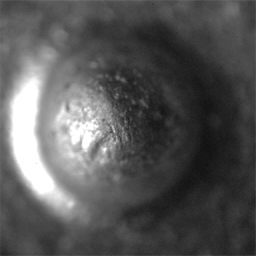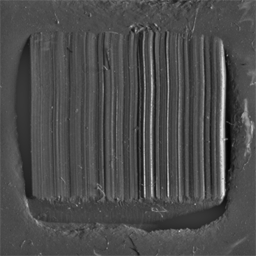Figure 1 shows a depression whose extension is greater than the depth of field achievable with the imaging optics. If the focus position is changed, every single location of the object can be imaged sharply, but not the entire image section in a single exposure.
Even if an image with suitable acquisition parameters would be sufficient in principle, it is often difficult to identify and adjust the optimum parameters. As an example, Figure 2 shows a groove texture where the groove structure is only clearly visible when the illumination falls perpendicular to the grooves. In the presented image series with varied azimuth of a directional illumination this is the case twice per revolution of the azimuth, whereas with an illumination in the direction of the grooves almost no groove structures are visible.
Solutions
In such cases, a promising approach is to acquire an image series instead of a single image, in which certain relevant parameters of the image acquisition are specifically varied. All parameters of the image acquisition that are accessible to technical influence can be varied. From such an image series a result image can be obtained by concentrating the information distributed over the series by means of a fusion.
This strategy corresponds to the approach of a human observer, who proceeds similarly during visual inspection: An object is examined under different perspectives and with different illumination until the desired property is determined.
Results
The image series shown above were examined for characteristic features that vary in the image series. These characteristics were classified in a suitable way, so that e.g. by evaluating a local contrast measure a synthetic focus extension is possible.
 |
 |
Fig. 3: Fusion result of the focus series of picture 1: Due to the synthetic extension of the focus area, the entire deepening is sharply illustrated.
|
Fig. 4: Fusion result of the illumination series of image 2: Segmentation of the scoring area, the background is masked in black.
|


 Fraunhofer Institute of Optronics, System Technologies and Image Exploitation IOSB
Fraunhofer Institute of Optronics, System Technologies and Image Exploitation IOSB 
